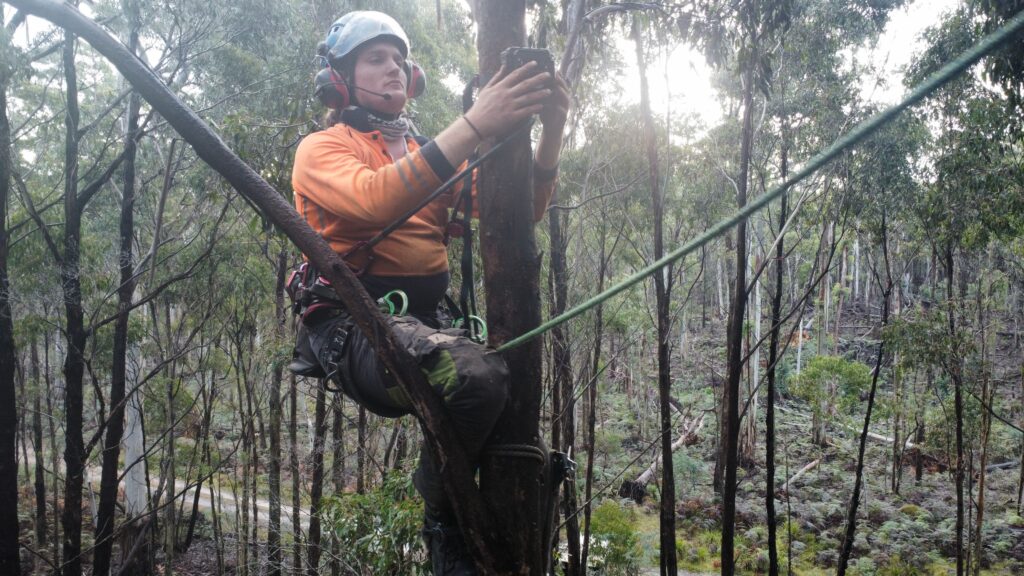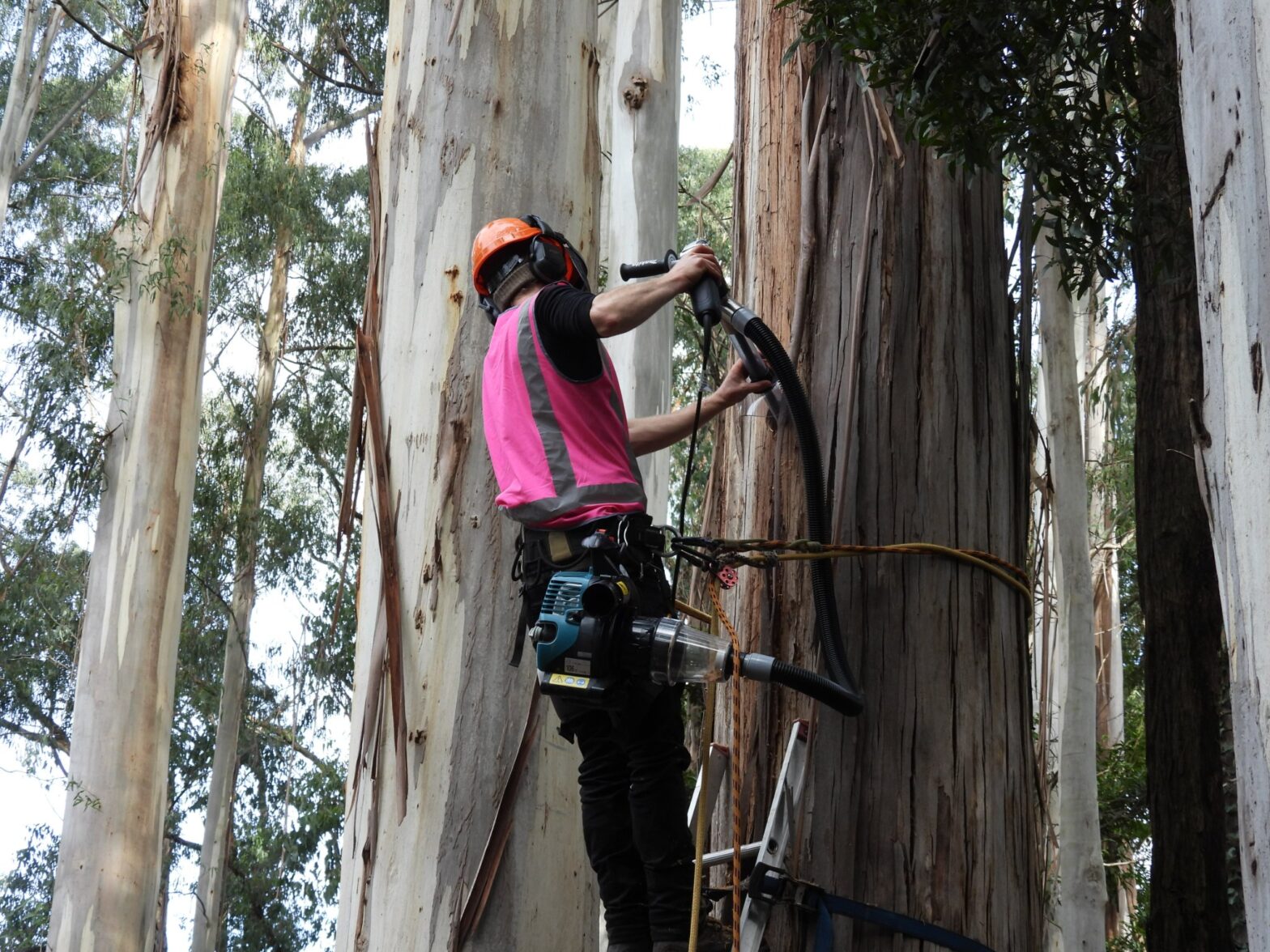Location: Wombat State Forest, Victoria.
Client: Department of Energy, Environment and Climate Action (DEECA)
Natural tree hollows can take more than 200 or 300 years to form, and unfortunately the wild storms of 2021 damaged many hollow-bearing trees in Wombat State Forest.
ERA installed more than 100 new hollows, and also set a number of remote cameras to monitor activity around the hollows, in storm-affected areas of Wombat State Forest.
Drawing on the most recent research on artificial hollow creation, our team used a variety of tools to create hollows with internal dimensions and openings that are based on known preferences of our target species. We created smaller, lower hollows in areas with connected mid-story vegetation for wildlife such as Eastern Pygmy-Possums, Brush-Tailed Phascogales and Red Browed Treecreepers. We created larger, higher hollows in Stringybark and Peppermint Gum forest for the Southern Greater Glider.

